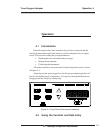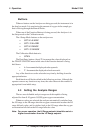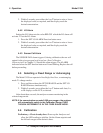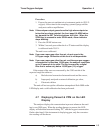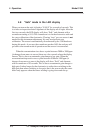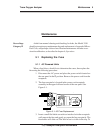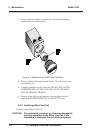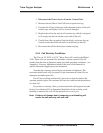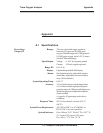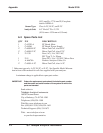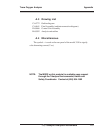
5-2
5 Maintenance Model 3190
Teledyne Analytical Instruments
open the spare fuse compartment, push on one end until it slides
out.
4. Remove the blown fuse and replace it with a 5×20 mm 0.5 A,
250 VAC, IEC time lag (T) fuse (P/N F1128) for AC units.
5. Replace the fuse holder into its receptacle, pushing in firmly until
it clicks.
5.1.2 DC Powered Units
In units with DC power, the fuse is located on the rear panel above the
ON/OFF switch.
1. Open the fuse holder by unscrewing and removing the cap
marked FUSE.
2. The fuse is located inside the receptacle, not inside the cap. Both
terminals are on the same end of the fuse. Pull straight out
without twisting to remove the old fuse from the receptacle, and
replace it with a 0.5 A, 125 V dc, very quick acting (FF)
microfuse (P/N F51).
3. Replace the cap by screwing it back into the receptacle.
5.2 Sensor Installation or Replacement
5.2.1 When to Replace a Sensor
There are several symptoms that may indicate sensor weakness other
than the Sensor Failure Alarm.
• Cell failure in the 3190 is usually characterized very slow
response to changes in oxygen levels below 100 ppm. This can
cause errors in span calibration, since the sensor may not have
time to settle properly.
• If large adjustments are required to calibrate the instrument, or
calibration cannot be achieved within the range of the ∆∇
buttons, the cell may need replacing.
• If the front panel Trace Oxygen Meter displays “00.0” when the
unit is plugged in, and the power switch is in the ON position,
CHECK to make sure the sensor is connected. If it is, replace the
sensor.




